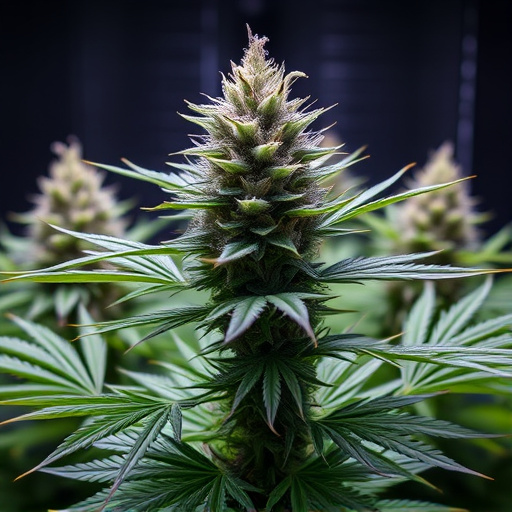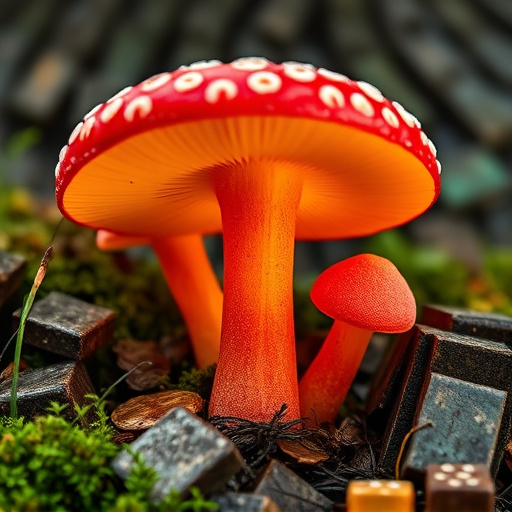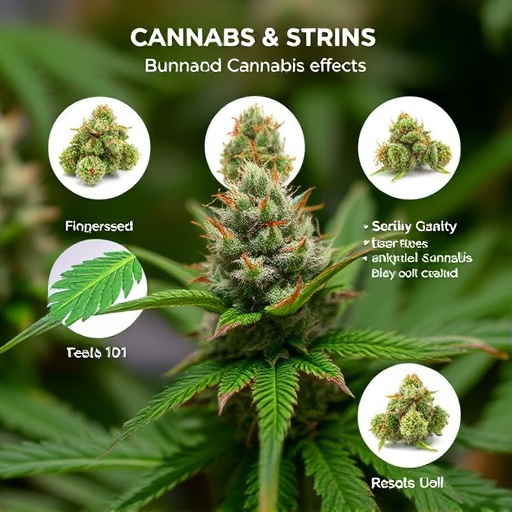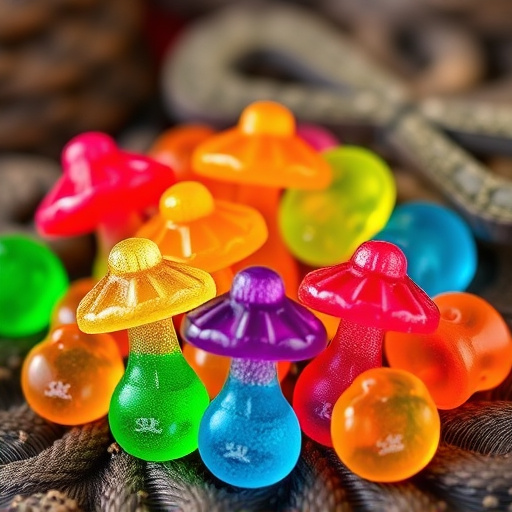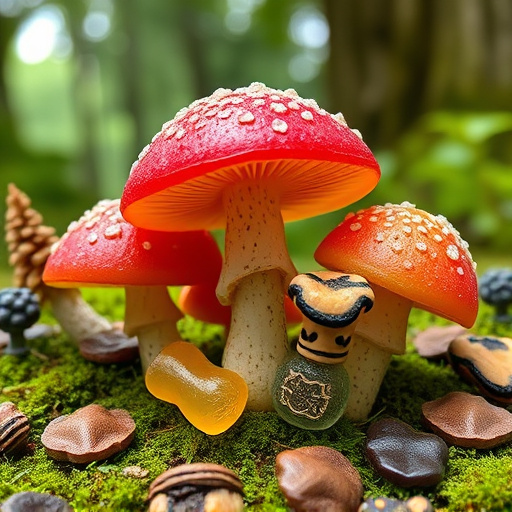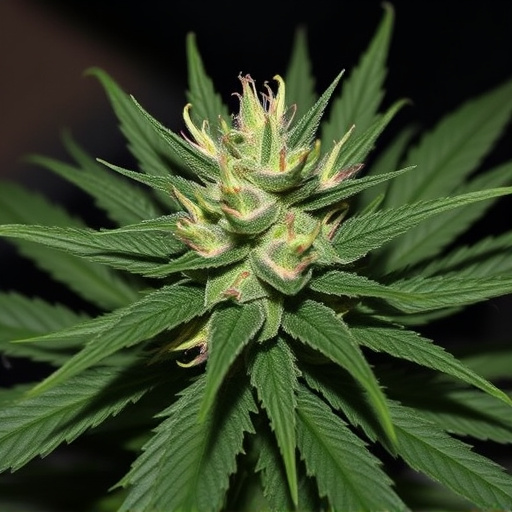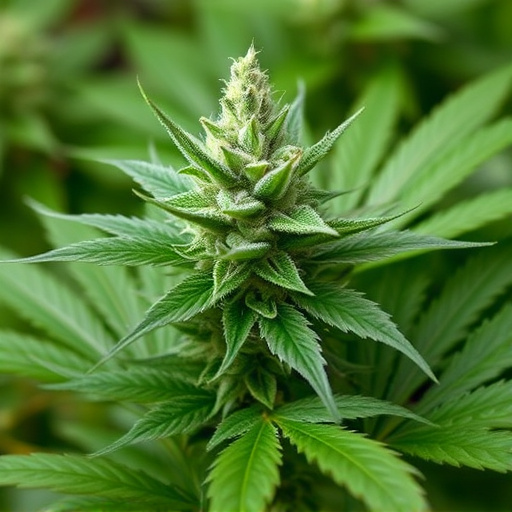The appearance of cannabis plants is a complex interplay between genetics and environment, resulting in a vast array of best cannabis strains with unique visual traits. Genetic diversity, driven by both natural evolution and human hybridization, allows for remarkable variations in leaf shape, color, structure, flower size, and density. Cultivators can manipulate environmental factors like temperature to enhance specific traits, ensuring the growth of high-quality best cannabis strains. Understanding these genetic influences is key for creating visually appealing and consistently effective cannabis products tailored to diverse consumer preferences.
Discover the fascinating interplay between genetics and temperature in shaping the appearance of cannabis plants. This article explores how natural variations, hybridization, and environmental factors create diverse visual traits, affecting harvest times and yield. Learn about optimal temperature ranges during growth stages, their impact on resin and terpene profiles, and how to identify high-quality strains through visual cues. Uncover case studies showcasing distinctive strain characteristics and gain tips for cultivators aiming to manipulate conditions for desired outcomes, revealing the secrets behind the best cannabis strains.
- The Role of Genetics in Cannabis Appearance
- – Exploring natural variations and hybridization
- – How specific traits manifest visually
The Role of Genetics in Cannabis Appearance
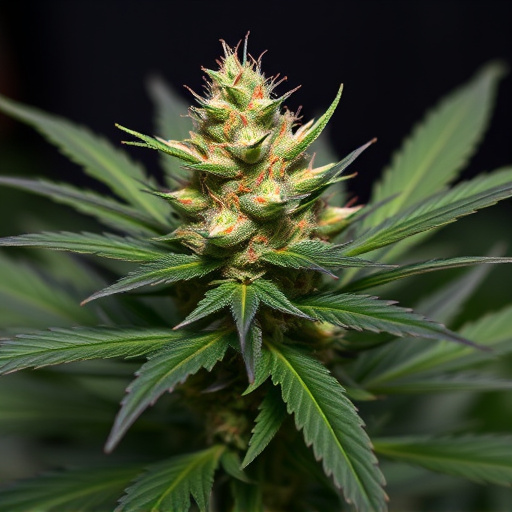
Cannabis appearance is a complex interplay between genetics and environmental factors, with one of the most significant influences coming from its genetic makeup. The best cannabis strains are often characterized by their unique visual attributes, determined by specific genetic traits passed down through generations. These traits can manifest as variations in leaf structure, color, shape, and overall plant morphology. For instance, some strains may exhibit broader leaves, while others have narrower, longer leaves, each contributing to the plant’s distinctive appearance.
Genetic diversity within cannabis allows for a vast array of visual expressions. Certain genes control pigment production, leading to vibrant green, blue, or purple hues in flowers. Others influence trichome development—hairy structures that produce resins—resulting in shiny, frosty appearances or dense, sticky textures. Understanding these genetic influences is crucial for cultivators aiming to create and select the best cannabis strains, ensuring their products meet consumer expectations regarding both visual appeal and desired effects.
– Exploring natural variations and hybridization
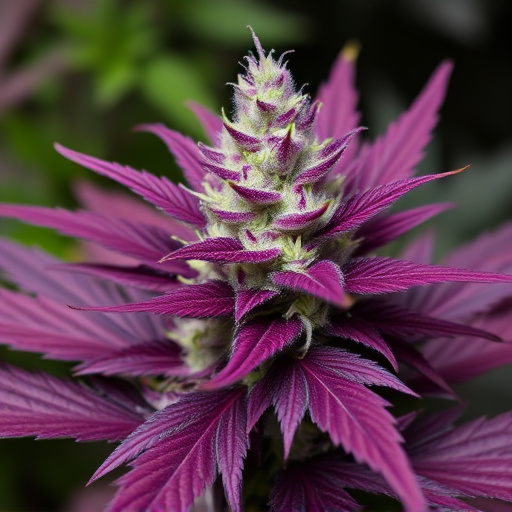
Cannabis, a plant with rich genetic diversity, showcases remarkable variations in its appearance due to natural evolutionary processes and human-induced hybridization. Exploring these natural variations is key to understanding the vast array of best cannabis strains available today. Each strain possesses unique genetic characteristics that dictate its visual appeal, including leaf shape, color, and overall structure.
Hybridization plays a pivotal role in expanding the cannabis spectrum. By carefully crossing different strains, cultivators create novel hybrids, combining desirable traits from each parent. This process allows for the emergence of new best cannabis strains with distinct appearances, catering to diverse consumer preferences while pushing the boundaries of what’s visually achievable within the species.
– How specific traits manifest visually
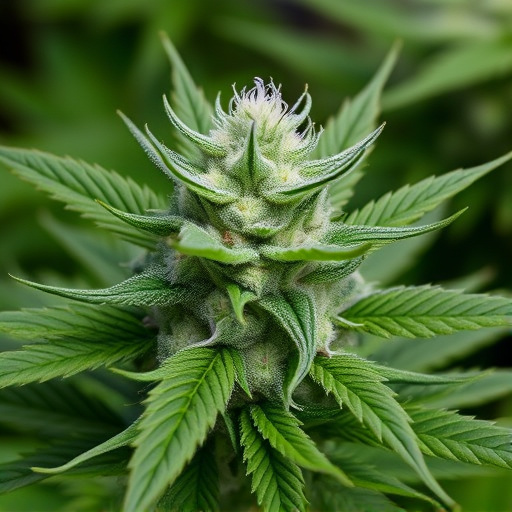
The visual appearance of cannabis plants, from leaf shape to flower color, is a captivating interplay of genetic predisposition and environmental factors, particularly temperature. Specific traits often manifest as distinct physical characteristics that contribute to the overall aesthetic appeal and quality of best cannabis strains. For instance, some genetics may naturally produce longer, narrower leaves or shorter, broader ones. Similarly, flowers can vary in size, shape, and density, with certain strains developing more robust calyxes (the compact structures covered in trichomes) that give them a dense, bushy appearance.
Temperature plays a crucial role in triggering these genetic expressions, influencing the rate of plant growth and development. Cooler temperatures can slow down vegetation but enhance flowering, often intensifying the vibrancy of colors and the density of resins. Warmer conditions, on the other hand, promote rapid vegetative growth, which can result in taller plants with fewer, larger leaves. Understanding these visual changes allows cultivators to manipulate environmental factors to achieve desired traits, ultimately enhancing the cultivation of high-quality best cannabis strains.
In understanding the diverse appearances of cannabis, both genetic predispositions and temperature play pivotal roles. By examining natural variations and hybridization within the plant’s genome, we uncover a spectrum of traits that influence its visual characteristics. Additionally, environmental factors, particularly temperature, significantly shape these features, making each cannabis strain unique. This knowledge is essential for cultivators aiming to produce top-quality best cannabis strains, where precise control over genetic makeup and growing conditions can lead to remarkable visual diversity and improved overall plant health.
